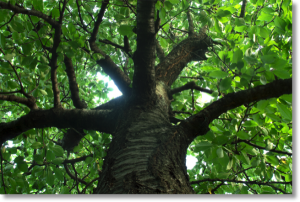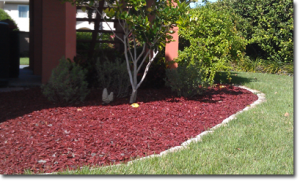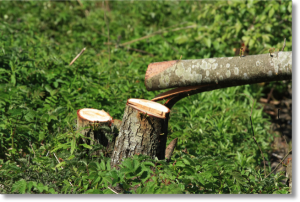How To Cut: Part Three
Work gloves made of leather or synthetic material are always a good idea. You will be handling rough wood that at the very least will give you splinters. Many plants, such as junipers, also leak sap that irritates the skin. Safety glasses should always be worn when you will be working inside or very close to a shrub, or working near a partner: it is very easy for the thin tips of branches to snap whiplike into your face.
Are the branches you’ll be working on too long or heavy? If you are about to prune a tree or large shrub, you will encounter branches that are heavy. One sign of this is the wood bows towards the ground before or while you cut. If this describes what you’re working on, one cut won’t hack it. You must use a preliminary cut to relieve the weight before your final pruning cut.
If using pruners, get the branch as deep between the blades as you can before making your cut. You will get the most leverage, and the strongest cut, by using this method. You will be tempted to use just the tips of the blades to cut because it is faster, but this is hard on your hands and dulls the tool faster.
Now, if you do not feel comfortable or simply don’t have the proper tools to do any tree maintenance, we are more than happy to do any of this work for you. Also, if you have multiple trees to remove or just don’t have the time to do it, we are here for you. We can handle all of your tree maintenance needs and services in the Tri-Cities (Kennewick, Richland, Pasco) and even West Richland. We look forward to being your preferred tree maintenance provider.
How To Cut: Part Three Read More »




